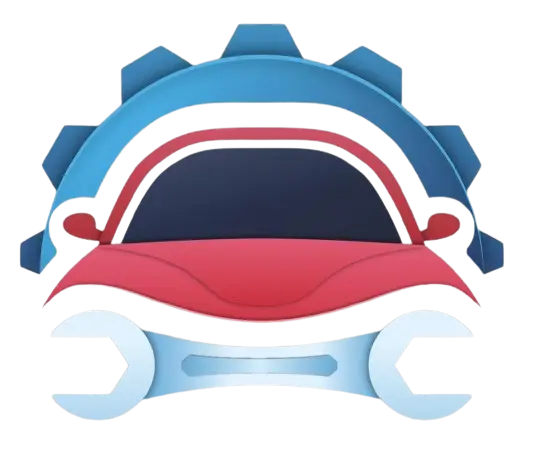Maintaining proper tyre pressure is crucial for every car owner, but it can be especially important for the versatile Kia Sportage.
Keeping your Sportage’s tyres perfectly inflated not only impacts driving safety and fuel efficiency, but also ensures a smooth and comfortable ride.
This comprehensive guide explores everything you need to know about Kia Sportage tyre pressure, covering all years and models.
Finding the Right Pressure
Forget one-size-fits-all! The recommended tyre pressure for your Sportage varies depending on several factors, including:

- Model Year: Different generations of the Sportage have slightly different pressure recommendations. Look for the tyre placard sticker inside your driver’s door jamb or within the owner’s manual.
- Tyre Size: Check the sidewall of your tyres to identify the specific size (e.g., 225/45R17). Different sizes often require different pressures.
- Loading: Are you carrying passengers and cargo? Increase the recommended pressure slightly for heavier loads.
- Temperature: Tyre pressure naturally fluctuates with temperature. Check your pressure more frequently in extreme hot or cold weather.
Understanding the Numbers
The tyre placard will typically display two sets of pressure values:
- Cold Tyres: This refers to the pressure when the tyres haven’t been driven for at least 3 hours or traveled less than a mile.
- Hot Tyres: This is the pressure after driving for a while. Always measure cold tyre pressure for the most accurate reading.
| Engine | Tyre size | Front pressure | Rear pressure | Front loaded pressure | Rear loaded pressure |
| 1.6 GDI | 215 70 R16 100H 4×4 | 35 | 35 | 35 | 35 |
| 1.6 GDI | 225 60 R17 99H 4×4 | 35 | 35 | 35 | 35 |
| 1.6 GDI | 235 55 R18 100H 4×4 | 35 | 35 | 35 | 35 |
| 1.6 GDI | 245 45 R19 102W XL 4×4 | 35 | 35 | 35 | 35 |
| 2.0 CRDi 184 AWD | 235 55 R18 100H 4×4 | 35 | 35 | 35 | 35 |
| 2.0 CRDi 184 AWD | 245 45 R19 102W XL 4×4 | 35 | 35 | 35 | 35 |
| 2.0 CVVT | 215 65 R16 98H 4×4 | 32 | 32 | 36 | 36 |
| 2.0 CVVT | 235 55 R17 99V 4×4 | 32 | 32 | 36 | 36 |
| 2.0 CVVT | 235 60 R16 100H 4×4 | 32 | 32 | 36 | 36 |
| 2.0 CVVT | 245 45 R18 96W 4×4 | 32 | 32 | 36 | 36 |
| 2.0 CVVT | 255 45 R18 99Y 4×4 | 32 | 32 | 36 | 36 |
| 2.0 GDI / AWD | 215 70 R16 100H 4×4 | 35 | 35 | 35 | 35 |
| 2.0 GDI / AWD | 225 60 R17 99H 4×4 | 35 | 35 | 35 | 35 |
| 2.0 GDI / AWD | 235 55 R18 100H 4×4 | 35 | 35 | 35 | 35 |
| 2.0 GDI / AWD | 245 45 R19 102W XL 4×4 | 35 | 35 | 35 | 35 |
Pressure Measurement Units
Your tyre placard might display pressure in PSI (pounds per square inch), kPa (kilopascals), or bar. Don’t worry, you can easily convert between these units using online tools or mobile apps.
Checking and Adjusting Pressure
- Invest in a reliable tyre pressure gauge and check your pressure regularly, at least once a month.
- Unscrew the valve cap and press the gauge firmly onto the valve stem until it hisses. Note the reading.
- If the pressure is below the recommended value, inflate the tyre using a suitable pump. Do not overinflate!
- Always replace the valve cap to prevent dust and moisture entry.
Pro Tips for Optimal Tyre Pressure
- Check your spare tyre pressure as well, even if you rarely use it.
- Consider investing in a Tyre Pressure Monitoring System (TPMS) for real-time pressure monitoring.
- Regularly rotate your tyres according to the manufacturer’s recommendations for even wear and tear.
- Maintaining proper tyre pressure will extend the life of your tyres, improve fuel efficiency, and enhance your driving experience.
Remember: By following these guidelines and keeping your Kia Sportage’s tyres properly inflated, you’ll be driving safely, efficiently, and comfortably for years to come.
Conclusion
Maintaining proper tyre pressure for your Kia Sportage isn’t just about ticking a box – it’s about maximizing your driving experience. By following the tips in this guide, you’ll ensure optimal safety, fuel efficiency, and comfort for every adventure.
Remember, keeping your tyres pumped up saves you money in the long run by extending their lifespan and preventing unnecessary wear and tear. So, grab your tyre gauge, check your pressure regularly, and hit the road with confidence!
FAQs
1. What happens if my Kia Sportage tyre pressure is too low?
Underinflated tyres can cause decreased fuel efficiency, uneven tyre wear, reduced handling, and increased risk of blowouts.
2. What happens if my Kia Sportage tyre pressure is too high?
Overinflated tyres can lead to a rough ride, reduced traction, premature tyre wear, and potential damage to the rims.
3. Can I adjust the tyre pressure myself?
Absolutely! It’s easy to learn and essential for every car owner. Invest in a good tyre gauge and pump, and follow the simple instructions in this guide.
4. How often should I check my Kia Sportage tyre pressure?
Aim for at least a monthly check, and more frequently in extreme weather conditions or when carrying heavy loads.
5. Where can I find the recommended tyre pressure for my specific Kia Sportage model?
Look for the tyre placard inside your driver’s door jamb or consult your owner’s manual. Remember, pressure varies based on model year and tyre size.
6. Should I inflate my Kia Sportage tyres with cold or hot air?
Always measure and adjust pressure when the tyres are cold, ideally before driving or after sitting for at least 3 hours.
7. Is there a way to monitor my Kia Sportage tyre pressure automatically?
Yes, a Tyre Pressure Monitoring System (TPMS) will alert you if any tyre pressure falls below a safe level. Consider investing in one for added peace of mind.
8. What about my spare tyre?
Don’t neglect your spare! Check its pressure regularly and ensure it’s properly inflated before you need it.

